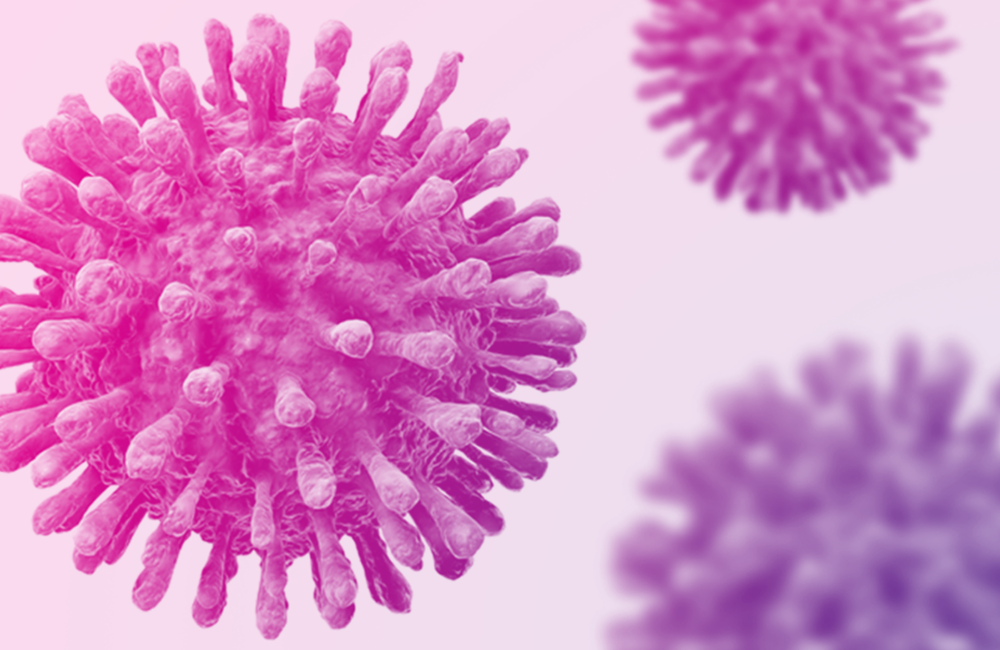Explaination/Medically reviewed on HIV/AIDS
- 14 Mar, 2022
- 2071 views
Explaining HIV and AIDS
- What is HIV?
- What is AIDS?
- Causes
- Symptoms
- Complications
- Myths and facts
- Diagnosis
- Treatment
- Prevention
- Living with HIV
- Takeaway
HIV is a virus that targets and alters the immune system, increasing the risk and impact of other infections and diseases. Without treatment, the infection might progress to an advanced stage called AIDS.
Due to medical advances, people with HIV and access to quality healthcare very rarely develop AIDS once they have started taking HIV treatment.
As experts such as the World Health Organization (WHO)Trusted Source observe, HIV has become a manageable condition, and many people with HIV have long, healthy lives.
The life expectancy of a person with HIV is now approaching that of someone who tests negative for the virus, provided that the person takes medications called antiretroviral therapy on an ongoing basis.
As of 2019, around 68% of adults trusted Source and 53% of children with HIV worldwide were receiving lifelong treatment.
In this article, we explore HIV and AIDS, including their symptoms, causes, and treatments.
What is HIV?
HIV stands for “human immunodeficiency virus,” and it attacks immune cells called CD4 cells. These are types of T cell — white blood cells that circulate, detecting infections throughout the body and faults and anomalies in other cells.
HIV targets and infiltrates CD4 cells, using them to create more copies of the virus. In doing so, it destroys the cells and reduces the body’s ability to combat other infections and diseases. This increases the risk and impact of opportunistic infections and some types of cancer.
It is worth noting, however, that some people have HIV for long periods without experiencing any symptoms.
HIV is a lifelong condition, but treatments and certain strategies can prevent the virus from transmitting and the infection from progressing.
What is AIDS?
AIDS stands for “acquired immunodeficiency syndrome.” It is an advanced stage of HIV infection.
Doctors identify AIDS as having a CD4 count of fewer than 200 cells per cubic millimeter. Also, they may diagnose AIDS if a person has characteristic opportunistic infections, associated types of cancer, or both.
When a person with HIV does not receive treatment, AIDS likely develops, as the immune system gradually wears down. However, advances in antiretroviral treatments have made this progression to AIDS increasingly less common.
In 2018, there were more than 1.1 million people living with HIV in the United States and 6,000 deaths related to AIDS.
For more in-depth information and resources on HIV and AIDS, visit our dedicated hub.
Causes
HIV can transmit when body fluids containing the virus come into contact with a permeable barrier in the body or small breaks in moist tissues of areas such as the genitals.
Specifically, HIV can transmit via
- blood
- semen
- pre-seminal fluid
- vaginal fluids
- rectal fluids
- breast milk
The virus cannot transmit through saliva, so a person cannot contract HIV through open-mouthed kissing, for example.
One of the main causes of HIV transmission in the world is anal or vaginal intercourse. For the transmission to happen, the people must not be using barrier protection, such as a condom, or taking pre-exposure prophylaxis (PrEP), a treatment that aims to prevent HIV transmission among people with known risk factors.
Another main cause of HIV transmission is sharing equipment for injecting drugs.
Less commonly, HIV transmits to babies during pregnancy, childbirth, or breastfeeding.
Also, there is a chance of transmission in blood transfusions, though the risk is extremely low when blood donations are effectively screened.
Learning the basics about HIV can keep you healthy and prevent HIV transmission. basic information about HIV.
If HIV is not treated, it can lead to AIDS (acquired immunodeficiency syndrome).
There is currently no effective cure. Once people get HIV, they have it for life.
But with proper medical care, HIV can be controlled. People with HIV who get effective HIV treatment can live long, healthy lives and protect their partners.
Where did HIV come from?
HIV infection in humans came from a type of chimpanzee in Central Africa.
The chimpanzee version of the virus (called simian immunodeficiency virus, or SIV) was probably passed to humans when humans hunted these chimpanzees for meat and came in contact with their infected blood.
Studies show that HIV may have jumped from chimpanzees to humans as far back as the late 1800s.
Over decades, HIV slowly spread across Africa and later into other parts of the world. We know that the virus has existed in the United States since at least the mid to late 1970s.
To learn more about the history of HIV in the United States and CDC’s response to the epidemic, see CDC’s HIV and AIDS Timeline.
How do I know if I have HIV?
The only way to know for sure whether you have HIV is to get tested. Knowing your HIV status helps you make healthy decisions to prevent getting or transmitting HIV.
symptoms?
Some people have flu-like symptoms within 2 to 4 weeks after infection (called acute HIV infection). These symptoms may last for a few days or several weeks. Possible symptoms include
Fever, Chills, Rash, Night sweats, Muscle aches, Sore throat, Fatigue, Swollen lymph nodes, and Mouth ulcers.
But some people may not feel sick during acute HIV infection. These symptoms don’t mean you have HIV. Other illnesses can cause these same symptoms.
See a health care provider if you have these symptoms and think you may have been exposed to HIV. Getting tested for HIV is the only way to know for sure.
What are the stages of HIV?
When people with HIV don’t get treatment, they typically progress through three stages. But HIV medicine can slow or prevent progression of the disease. With the advancements in treatment, progression to Stage 3 is less common today than in the early days of HIV.
Stage 1: Acute HIV Infection
People have a large amount of HIV in their blood. They are very contagious. Some people have flu-like symptoms. This is the body’s natural response to infection. But some people may not feel sick right away or at all. If you have flu-like symptoms and think you may have been exposed to HIV, seek medical care and ask for a test to diagnose acute infection. Only antigen/antibody tests or nucleic acid tests (NATs) can diagnose acute infection.
Stage 2: Chronic HIV Infection
This stage is also called asymptomatic HIV infection or clinical latency. HIV is still active but reproduces at very low levels. People may not have any symptoms or get sick during this phase. Without taking HIV medicine, this period may last a decade or longer, but some may progress faster. People can transmit HIV in this phase. At the end of this phase, the amount of HIV in the blood (called viral load) goes up and the CD4 cell count goes down. The person may have symptoms as the virus levels increase in the body, and the person moves into
Stage 3.
People who take HIV medicine as prescribed may never move into Stage 3.
Stage 3: Acquired Immunodeficiency Syndrome (AIDS)
The most severe phase of HIV infection. People with AIDS have such badly damaged immune systems that they get an increasing number of severe illnesses, called opportunistic infections. People receive an AIDS diagnosis when their CD4 cell count drops
Africa challenges under COVID-19 epidemic with effect on HIV
Countries in Africa assessed as being least vulnerable to an epidemic were the worst affected by Covid-19, new research suggests.
Nations with more urban populations and strong international travel links were worst affected by the pandemic, the study shows.
Mortality rates and levels of restrictions -- such as lockdowns and travel bans -- were found to be lowest in countries previously thought to be at greatest risk from Covid-19.
A team of researchers from the NIHR Global Health Research Unit Tackling Infections to Benefit Africa (TIBA) from the University of Edinburgh worked with the World Health Organization (WHO) African Region to identify factors affecting mortality rates during Africa's first two Covid-19 waves and the timing of the first reported cases.
Professor Mark Woolhouse, TIBA Director, who co-led the study, said: "Our study shows very clearly that multiple factors influence the extent to which African countries are affected by Covid-19. These findings challenge our understanding of vulnerability to pandemics.
"Our results show that we should not equate high levels of preparedness and resilience with low vulnerability.
"That seemingly well-prepared, resilient countries have fared worst during the pandemic is not only true in Africa; the result is consistent with a global trend that more developed countries have often been particularly hard hit by Covid-19."
Among 44 countries of the WHO African Region with available data, South Africa had the highest mortality rate during the first wave between May and August 2020, at 33.3 deaths recorded per 100,000 people. Cape Verde and Eswatini had the next highest rates at 17.5 and 8.6 deaths per 100,000, respectively. At 0.26 deaths recorded per 100,000, the lowest mortality rate was in Uganda.
South Africa also recorded the highest mortality rate during the second wave between December 2020 and February 2021, at 55.4 deaths per 100,000. Eswatini and Botswana recorded rates of 39.8 and 17.7 deaths per 100,000, respectively. The lowest rate was in Mauritius, which recorded no deaths during the second wave.
"The early models which predicted how Covid-19 would lead to a massive number of cases in Africa were largely the work of institutions not from our continent. This collaboration between researchers in Africa and Europe underlines the importance of anchoring analysis on Africa's epidemics firmly here," said Dr. Matshidiso Moeti, WHO Regional Director for Africa and co-author. We can no longer focus our understanding of disease transmission purely on the characteristics of a virus -- Covid-19 operates within a social context which has a major impact on its spread."
As well as those with large urban populations and strong international travel links, countries with high rates of HIV were also more likely to have higher mortality rates. This may be because people with HIV often have other health conditions that put them at greater risk from Covid-19, the team suggests.
The weak link between mortality rate and the timing or severity of government-imposed restrictions on day-to-day activities is shows the impact of the wide range of application and enforcement of these restrictions across the region, making a consistent impact pattern difficult to discern. Restrictions during peaks of infection are well documented to have interrupted transmission in the region.
The findings show that the earliest recorded cases of Covid-19 were in counties where most people live in urban areas, with strong international travel links and greater testing capacity. Algeria was the first of 47 African countries to report a case, on 25 February 2020. Most countries had recorded cases by late March 2020, with Lesotho the last to report one, on 14 May 2020.
Researchers document higher deaths during the second wave, as compared to the first. The peak of infections during the second wave was also higher, with 675 deaths across the continent on 18 January 2021 compared with 323 during the first wave peak on 5 August 2020. Potential under-reporting was accounted for in the analysis.
Dr Sarah Puddicombe, NIHR's Assistant Director for Global Health Research, said: "This study offers compelling results which challenge accepted views of epidemic preparedness and resilience in Africa. It is one of a series of important contributions that the TIBA partnership, working with governments and the WHO Regional Office has made to inform local, national and pan-African responses to the Covid-19 pandemic."
by Michael Virata, MD — Written by Adekoyejo Osindero
- Category:
- Health
- No comments




